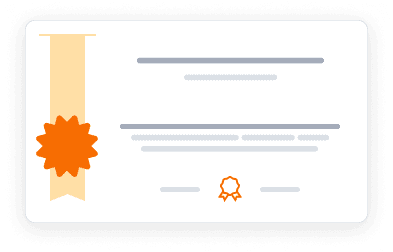Learn essential computer science concepts like hash tables, disjoint sets, and graph algorithms in this comprehensive course.
Learn essential computer science concepts like hash tables, disjoint sets, and graph algorithms in this comprehensive course.
This course cannot be purchased separately - to access the complete learning experience, graded assignments, and earn certificates, you'll need to enroll in the full Accelerated Computer Science Fundamentals Specialization program. You can audit this specific course for free to explore the content, which includes access to course materials and lectures. This allows you to learn at your own pace without any financial commitment.
4.7
(540 ratings)
18,655 already enrolled
Instructors:
English
پښتو, বাংলা, اردو, 3 more
What you'll learn
Implement and analyze hash tables with various collision handling strategies
Design and optimize disjoint set data structures using up-trees
Create efficient graph representations using different implementation methods
Master fundamental graph algorithms including BFS, DFS, and Dijkstra's algorithm
Apply minimum spanning tree algorithms like Kruskal's and Prim's methods
Skills you'll gain
This course includes:
3.1 Hours PreRecorded video
9 assignments
Access on Mobile, Tablet, Desktop
FullTime access
Shareable certificate
Closed caption
Get a Completion Certificate
Share your certificate with prospective employers and your professional network on LinkedIn.
Created by
Provided by

Top companies offer this course to their employees
Top companies provide this course to enhance their employees' skills, ensuring they excel in handling complex projects and drive organizational success.





There are 4 modules in this course
This comprehensive course delves into fundamental data structures essential for handling unordered data in computer science. Students learn about hash tables for efficient key-value storage, disjoint sets for managing grouped elements, and graph algorithms for representing and analyzing relationships between data. The curriculum covers implementation techniques, algorithmic analysis, and practical applications through hands-on programming assignments. Special emphasis is placed on understanding collision handling, graph traversal algorithms, and minimum spanning trees.
Orientation; Hashing
Module 1 · 7 Hours to complete
Disjoint Sets
Module 2 · 2 Hours to complete
Graph Data Structures
Module 3 · 7 Hours to complete
Graph Algorithms
Module 4 · 2 Hours to complete
Fee Structure
Instructor
Teaching Assistant Professor of Computer Science
Wade Fagen-Ulmschneider is a Teaching Assistant Professor of Computer Science at the University of Illinois at Urbana-Champaign (UIUC), where he specializes in data structures and data visualization. With a strong passion for data, he serves as the lead instructor for CS 225 (Data Structures), a course that has engaged thousands of students and accumulated over 10 million interactions through various data visualization projects. His innovative teaching methods and commitment to student success have earned him numerous accolades, including the Collins Award for Innovative Teaching and recognition as one of the National Academy of Engineering's Frontiers of Engineering Education scholars.In addition to his teaching responsibilities, Professor Fagen-Ulmschneider has developed several courses, including "Object-Oriented Data Structures in C++" and "Data Science Discovery," which emphasize practical applications of computer science concepts. He has been consistently ranked as an excellent instructor by his students for the past decade. His contributions to education extend beyond the classroom; his work on data visualizations has been highlighted by prominent media outlets and utilized by state governors. Through his engaging courses and dedication to fostering a deep understanding of computer science, Wade Fagen-Ulmschneider continues to inspire the next generation of engineers and computer scientists at UIUC.
Testimonials
Testimonials and success stories are a testament to the quality of this program and its impact on your career and learning journey. Be the first to help others make an informed decision by sharing your review of the course.
Frequently asked questions
Below are some of the most commonly asked questions about this course. We aim to provide clear and concise answers to help you better understand the course content, structure, and any other relevant information. If you have any additional questions or if your question is not listed here, please don't hesitate to reach out to our support team for further assistance.



